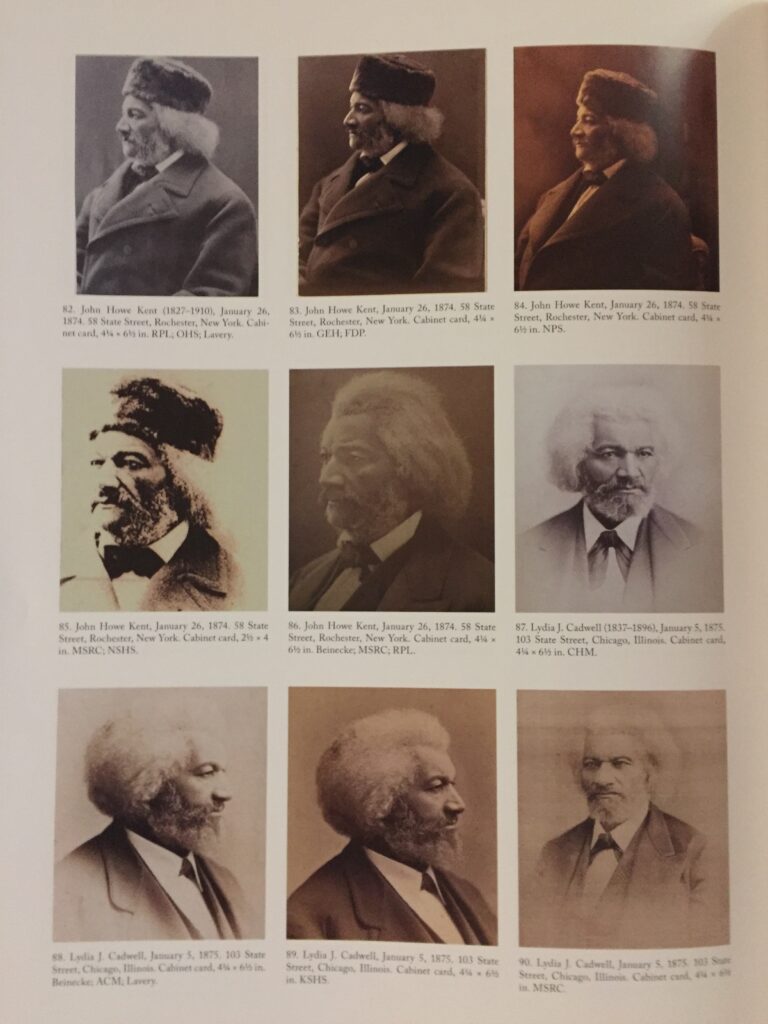Like many of you I have been thoroughly entertained by the new AI technology introduced by MyHeritage that brings motion to still photographs. Upload a still photograph and watch your subject come to life through ever so slight changes to its facial expression.
I’ve seen people respond strongly to the sight of deceased family members, who appear to be magically brought back to life for a few fleeting seconds.
Not surprisingly, numerous still photographs of famous Americans have been uploaded to the site. Some of them are just downright awkward, while others look very natural in their facial movements. There is young Abraham Lincoln and Henry Clay. John Calhoun looks even creepier in motion, if that is even possible.
Of all the historic figures that have been uploaded from nineteenth-century America the one that I find most impressive is Frederick Douglass. I’ve seen a couple of different animated photographs and they are mesmerizing. Here are two examples from different periods in his life.
Here’s another animation of Frederick Douglass that @jcdmce generated earlier today (which got me hooked on these animations in the first place). That subtle smile at the end puts Mona Lisa to shame. pic.twitter.com/fzzIm7bL56
— La Marr Jurelle Bruce (@Afromanticist) February 28, 2021
I wonder if one of the attractions of these animations is the desire to feel closer to a past that always seems to slip through our fingers. But the longer I spent glued to the computer screen watching Douglass twitch, sway, and blink the more I felt as if I was violating his trust.
The authors of Picturing Frederick Douglass, have identified 168 “separate photographs” of Frederick Douglass, making him the most photographed American in the nineteenth century. According to the authors of the book, Douglass “defined himself as a free man and citizen as much through his portraits as his words.”
In addition:
[H]e believed in its truth value, or objectivity. Much as his Bible referred to an unseen but living God, a photograph accurately captured a moment in time and space. Even more than truth-telling, the truthful image represented abolitionists’ greatest weapon, for it gave the lie to slavery as a benevolent institution and exposed it as a dehumanizing horror. Like slave narratives (Douglass was a master of the genre), photographic portraits bore witness to African Americans’ essential humanity, while also countering the racist caricatures that proliferated throughout the North. (p. xiii)
Douglass posed for photographs with the clear intention to convey a specific message to the viewer. He accomplished this through his choice of clothing, the angle at which he sat in relationship to the camera, and especially his choice of facial gesture.

A page from Picturing Frederick Douglass (p. 178)
The use of technology to alter still photographs is nothing new. I can certainly see some interesting applications for classroom use with this technology, but my fear is that we run the risk of losing sight of something profoundly important about Douglass and his embrace of photography as a form of political empowerment and a means to establish one’s basic humanity.
What do you think?
If Douglass limited his appearances to just photos so as to control his public appearance, I might agree with you, but Douglass traveled extensively. I think he would have approved of any technology that enabled him to spread the gospel of racial equality.
Red Foxx could pass for Frederick Douglas (Photo #85 from the book ‘Picturing Frederick Douglass’.
Agree! I know it’s irrelevant to his work, but Douglass was also physically very beautiful throughout his life.
P.S. Thrilled to see from your twitter feed that Levine is publishing new biography of Thaddeus Stevens, whom I have longed to know more about since seeing Tommy Lee Jones play him in “Lincoln”. I had known little more than his name as a Radical before that. Your tweets and blog posts on new books are really helpful in alerting me to books I might otherwise miss. Thanks so much.
I am a couple chapters in and thoroughly enjoying it.
Kevin, there are some very strange people out there. Very scary.
You dealt with that well.
Mike
I have been afraid to try this with Col. Ellsworth. No one loves that guy like I do, but pretending he is still around verges on creepy to me.
I know what you mean. I haven’t been tempted to try it with William Mahone or Robert Gould Shaw.
Well, you’re not going to see much espression of Mahone’s face, are you? I suppose he could blink, but that’s it.
Does anyone reading this website wonder why there were none, no photos of a dead John Wilkes Booth? The technology was there, but no pictures of this man, dead! He was public enemy number one, but on one thought to keep this “dead man” on ice long enough to take a photo or two? There are many pictures of this guy Douglas, but none of JW Booth! Bull!
I am so sorry that there are no photographs of a dead John Wilkes Booth for you to gawk at.
Why not? Why are there no photos of JW Booth, lying dead on a slab? But we have plenty of pictures of Douglas?
I honestly don’t know, Jimmy. What I do know is that this is going to be your final comment on this blog post.